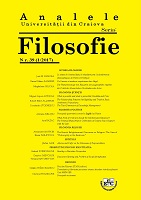THE TACIT DIMENSION OF KNOWLEDGE MANAGEMENT
THE TACIT DIMENSION OF KNOWLEDGE MANAGEMENT
Author(s): Constantin StoenescuSubject(s): Epistemology, Philosophy of Mind, Cognitive Psychology
Published by: Editura Universitaria Craiova
Keywords: knowing how and knowing that; tacit knowledge; learning by doing; organizational knowledge; the SECI model of knowledge production;
Summary/Abstract: This paper is survey on the role of tacit knowledge in knowledge management. The distinction between explicit or propositional knowledge and implicit or tacit knowledge has been made relatively late in epistemology. Some philosophers specified the difference between knowing that and knowing how (Ryle, 1945) and talked about the tacit dimension of personal knowledge in learning by doing process (Polanyi, 1967). Others mentioned that knowledge is shared in a social context and developed theories about forms of life and paradigms that put the question of rules following (Wittgenstein, 1953, Kuhn, 1970). On the other hand, some social theorists observed that knowledge play a new role that changed the organizational nature of knowledge based society (Bell, 1999, Drucker, 1991). Knowledge was understood as a new kind of capital which can produce a competitive advantage. Nonaka and Takeuchi proposed a model of knowledge production based on the mutual conversion of tacit knowledge into explicit knowledge. Were described four phases: socialization, externalization, combination and internalization. The SECI model created a new research area devoted to the role of tacit knowledge in knowledge management. Collins proposed the tripartite distinction between somatic tacit knowledge, relational tacit knowledge and collective tacit knowledge. Others have mentioned the differences between technical and cognitive components of collective tacit knowledge.
Journal: ANALELE UNIVERSITĂȚII DIN CRAIOVA. SERIA FILOSOFIE
- Issue Year: 1/2017
- Issue No: 39
- Page Range: 76-99
- Page Count: 24
- Language: English

